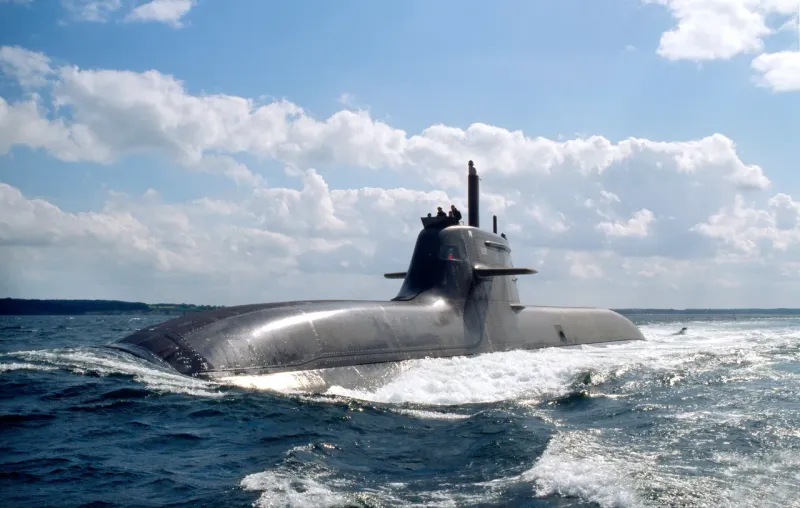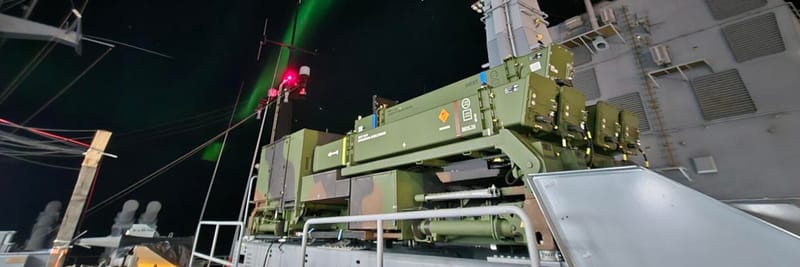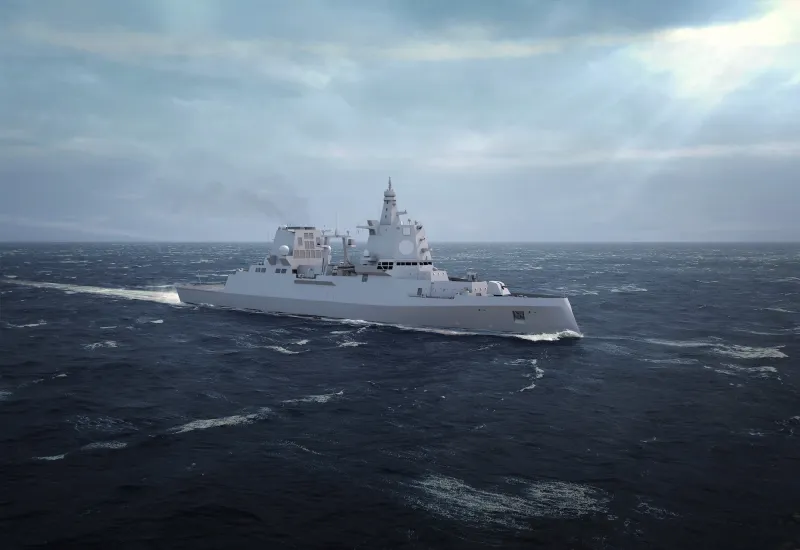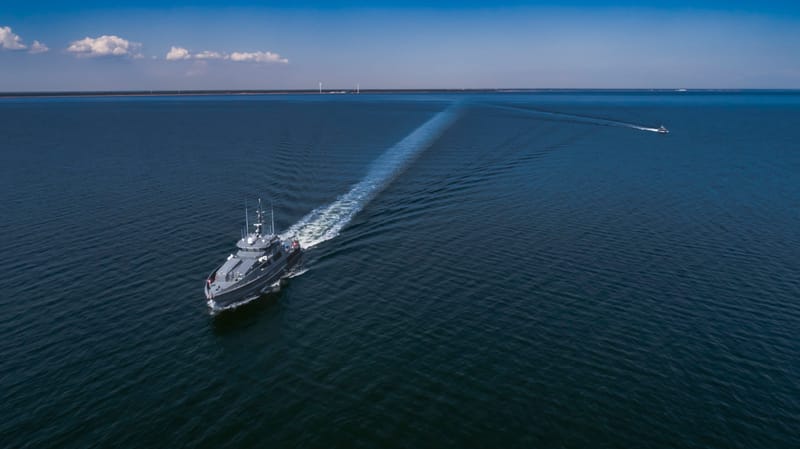Ukraine's Sea-Based SAM Nodes: MAGURA V7 Delivers First NATO AIM‑9 Kill, Second Su‑30 Downed
Ukraine Integrates NATO AAM into Autonomous Naval Systems; Maritime Air Defense Network Now Active in Black Sea Theater.
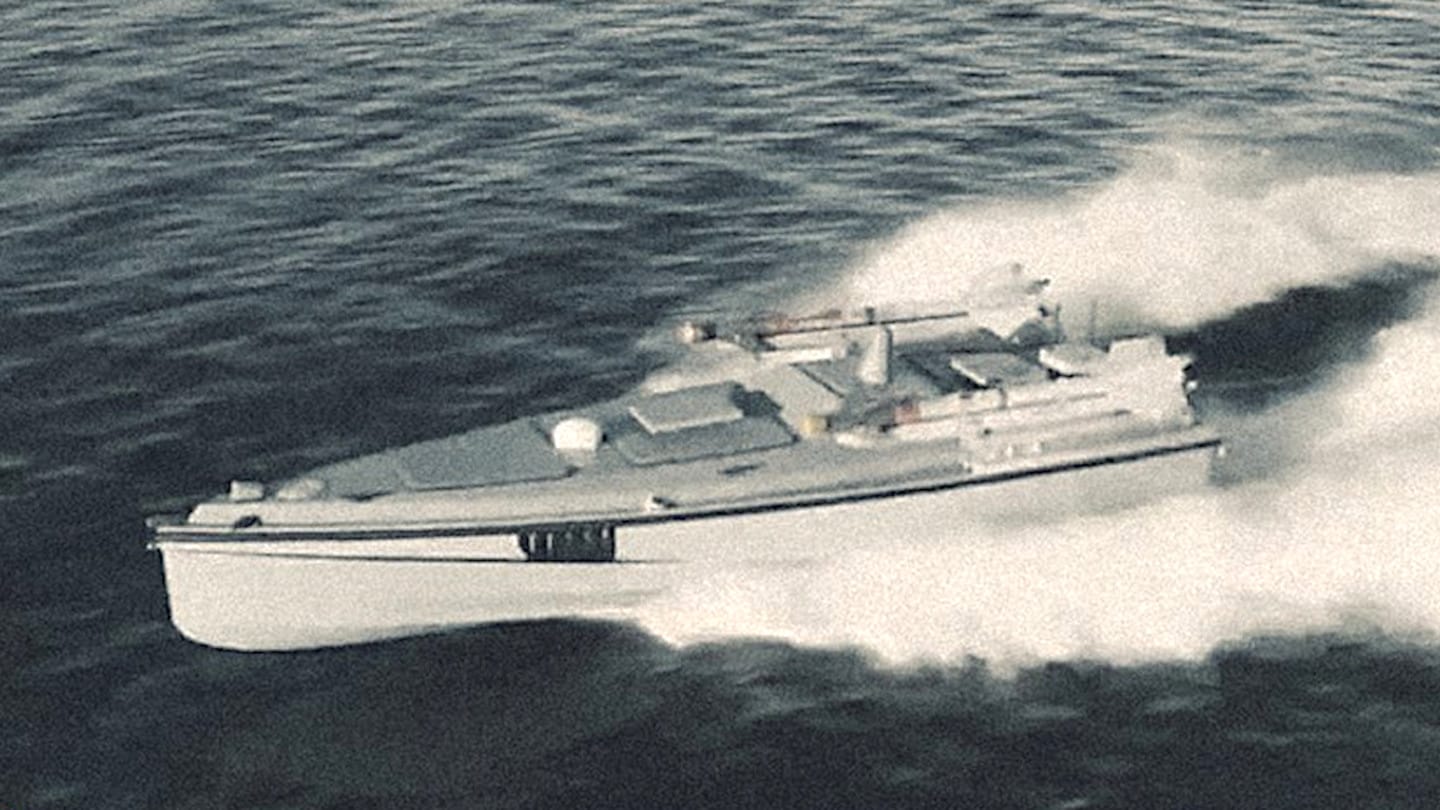
This signals a shift toward mobile, autonomous maritime SAM platforms, pressuring Russian low-altitude patrols over the Black Sea and offering a modular concept replicable by NATO littoral forces across other theaters.

Black Sea, May 8, 2025 — Ukraine has confirmed a second successful air engagement by its unmanned naval drone fleet. On May 6, a MAGURA V7 surface drone operated by the Main Directorate of Intelligence (HUR), Group 13, used a U.S.-supplied AIM-9 Sidewinder missile to shoot down a Russian Su-30SM near Novorossiysk. While the AIM-9 has previously been integrated into platforms such as NASAMS, this marks the first known use of a NATO-standard air-to-air missile launched from a maritime unmanned platform.
The event follows a similar strike on May 2, when a MAGURA V5 drone downed a Su-30SM using a Russian R-73 missile. That engagement—reported earlier this week—was the first confirmed instance of a naval drone executing an air-to-air kill against a crewed fighter aircraft. A kill that forced analysts to reassess the threat envelope of maritime drones.
Operational Context
MAGURA drones were originally fielded for anti-ship and reconnaissance roles. These two air-to-air strikes suggest an expanded use case: maritime air denial against low-flying aircraft. The employment of short-range air-to-air missiles on autonomous platforms indicates a move toward distributed, platform-agnostic air defense capability.
With two verified engagements using different platforms and missile types, Ukraine appears to be formalizing this role. The MAGURA V7 introduces a new operational model for naval drones—integrating air engagement into existing ISR and strike functions.
Ukraine has effectively created a maritime SAM system—without a ship, scalable.
Confirmed Strike Details
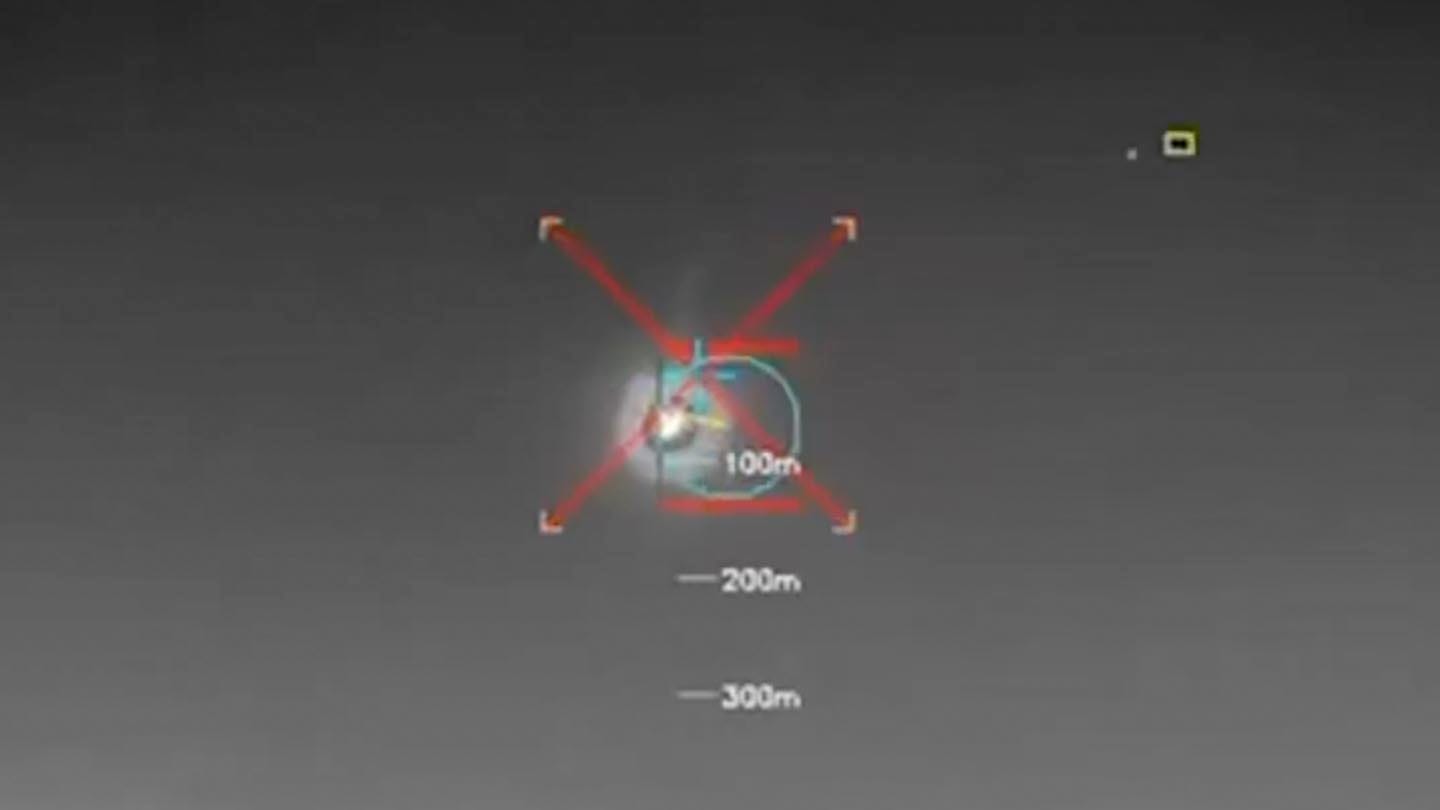
- Date: May 6, 2025
- Location: Black Sea, 12–15 km off Novorossiysk
- Platform: MAGURA V7 unmanned surface vessel
- Operator: Ukraine’s Main Directorate of Intelligence (HUR), Group 13
- Target: Russian Su-30SM multirole fighter
- Weapon System: AIM-9 Sidewinder (U.S.-supplied)
- Evidence: Thermal plume tracking, intercepted communications, corroborated footage
- Confirmation: OSINT geolocation, intercepted comms, Ministry of Defence (Ukraine) sources
“This is a historic first. The enemy was hit with a missile from a drone at sea—something no one else has done.”
— Lt. Gen. Kyrylo Budanov, Head of Ukraine’s Defense Intelligence Directorate (The War Zone, May 2025)
MAGURA Platform Overview
MAGURA V7: System Profile
An evolution of the V5 platform, the MAGURA V7 measures approximately 8 meters in length, with a reinforced hull, extended stability systems, and dedicated missile launch rails for Western munitions. Sources confirm the integration of AIM-9 Sidewinder missiles, traditionally used in fighter jet engagements, now sea-launched with adapted tracking and targeting systems.
- Length: 8m
- Propulsion: Hybrid diesel-electric
- Armament: 2× AIM-9 Sidewinder
- Control: AI-guided, satellite redundancy
- Radar Signature: Low-observable composite hull, heat-dampened exhaust
- Engagement Envelope: ~10 km vs low-flying aircraft
MAGURA V7: Targeting & Kill‑Chain Mechanics
The V7 carries a domestically developed EO/IR turret that autonomously acquires and tracks airborne targets. Data fusion software generates a firing solution for the AIM‑9 without external radar cueing, though the SAT‑link allows third‑party overwatch (e.g., coastal radar or AWACS) to hand off targets when available. This makes each V7 a self‑contained air‑denial node while remaining network‑capable.
MAGURA V5 vs V7: Technical Comparison
| Feature | MAGURA V5 | MAGURA V7 |
|---|---|---|
| Length | 5.5 meters | 8 meters |
| Armament | R-73 / Kamikaze | AIM-9 Sidewinder |
| Payload | 200 kg | 300+ kg |
| Range | 800+ km | Comparable |
| Role | Recon / Strike | Air Defense |
| Control | AI-guided, remote | AI + SAT redundancy |
| Signature | Low-RCS hull | Enhanced RCS suppression |
MAGURA V5 vs V7: Strike Chronology & Locations
10 Nov 2023 – Serna & Akula-Class
V5 drones destroyed two Russian landing crafts in Chornomorske, Crimea.
1 Feb 2024 – Ivanovets Corvette
Multiple V5 drones sank the corvette Ivanovets near Lake Donuzlav.
14 Feb 2024 – Caesar Kunikov
The Caesar Kunikov was sunk off Alupka by V5 drones operated by GUR.
5 Mar 2024 – Sergey Kotov
V5 drones struck and sank the Sergey Kotov patrol ship near Kerch Strait.
30 May 2024 – KC-701 Tuna-Class
Two Tuna-class boats destroyed by V5 drones near occupied Crimea.
10 Aug 2024 – KS-701 Tunets
KS-701 Tunets boat destroyed by a V5 drone near Chornomorske.
31 Dec 2024 – Mi-8 Helicopter
V5 drone with R-73 missile shot down a Mi-8 near Cape Tarkhankut.
2 May 2025 – Su-30 Fighter Jet
First sea-launched air-to-air kill: V5 drone downed Russian Su-30 with R-73.
6 May 2025 – Su-30 Fighter Jet
V7 drone used an AIM-9 Sidewinder to down a second Russian Su-30 near Novorossiysk.
➤ V5 executed the world’s first sea-based air-to-air kill; V7 followed using NATO-standard missile integration.
➤ Sources: Ukraine MoD, OSINT, and verified news outlets.
Doctrinal and Strategic Implications
I. Operational Doctrine Shift
Ukraine’s successful use of MAGURA-class naval drones for air-to-air engagements signals a substantial doctrinal shift. SAM capability is no longer tied to hull-based systems. By combining NATO-standard AAMs with autonomous targeting and networked control, Ukraine has operationalized a mobile air denial layer—scalable, deniable, and decoupled from traditional naval force structure.
Key developments include:
- SAM Capability Decoupled from Manned Vessels: Air defense no longer requires a crewed ship as a launch platform. MAGURA drones now serve as autonomous nodes in a distributed air defense grid.
- Air-Denial Envelope Extended Seaward: The engagement of Su-30SM fighters over open sea demonstrates that the threat envelope is no longer tied to coastal infrastructure.
- Deniable and Attritable Systems: MAGURA platforms can be deployed with minimal risk of escalation, offering high payoff at low cost.
- Cost-Exchange Ratio Inverted: Estimated cost of a MAGURA V7 drone plus missile (~$350,000) versus the ~$50 million value of a downed Su-30SM reflects a dramatic asymmetry.
- Multi-Role Functionality Emerging: The V5 and V7 variants demonstrate a shift from one-way strike assets toward reusable, mission-flexible launch platforms.
“Ukraine has created a maritime SAM system—without a ship.” — Großwald Doctrine Brief
II. Strategic Implications for NATO and Unaligned Actors
The deployment of the MAGURA V7 redefines expectations for maritime air defense. Unlike traditional systems reliant on capital ships or fixed infrastructure, the V7 introduces a platform model that is mobile, networked, and scalable.
Ukraine’s integration of Western AAMs into domestically produced naval drones—without confirmed foreign engineering support—demonstrates that similar capabilities could be fielded by other NATO-aligned navies, particularly those operating in littoral environments.
Smaller navies without carriers or Aegis-class air defense ships can now consider distributed USVs as viable platforms for executing sea-based air denial.
Key implications include:
- Strategic Deterrence Multiplier: Dozens of autonomous launch nodes present a more complex targeting challenge than a single high-value asset.
- Doctrine Shift: The platform no longer acts as a munition but as a reusable launcher integrated into a broader kill web.
- Replication Potential: NATO’s Baltic, Adriatic, and Black Sea forces could adapt this model for layered air defense in contested maritime zones.
“The V7 marks a transition from the ‘one-way munition’ paradigm toward a reusable, networked launcher platform.”
III. Comparative Note on Global Proliferation
Ukraine's operational deployment of NATO-AAMs on autonomous naval platforms represents a significant capability delta among peer and near-peer actors.
Iran's unmanned capabilities remain centered on land-attack applications, with no verified instances of air-to-air engagements by maritime drones as of May 2025 .
China's People's Liberation Army Navy (PLAN) continues to develop a range of unmanned surface and subsurface vehicles, but no confirmed reports indicate deployment of autonomous USVs capable of air-to-air interception . Most known PLAN unmanned systems are ISR-focused or reliant on shipborne and coastal radar networks for engagement coordination.
Ukraine's field adaptation—executed without publicly disclosed Western integration or engineering support—suggests a level of doctrinal flexibility and systems integration not currently reflected in peer programs .
IV. Analyst Insights & Key Questions
This section outlines advanced operational uncertainties and doctrine-relevant questions for future evaluation:
Q: Can the MAGURA V7 prosecute targets beyond 10 km using third-party cueing (e.g., AWACS or coastal radar)?
A: Current data suggests V7 uses an onboard EO/IR turret to generate autonomous firing solutions. However, its SAT-link allows for third-party overwatch, making extended-range engagements theoretically possible with further C2 integration.
Q: What is the reload and turnaround time for forward-based MAGURA V7 platforms?
A: Undisclosed. Rapid sortie regeneration would be critical for operational sustainability, especially in contested littoral zones. Current assumptions presume modular rearmament capability in dispersed logistics environments.
Q: How resilient is the MAGURA command architecture to electronic warfare?
A: The AIM-9’s IR seeker is naturally ECM-resistant. However, the resilience of the drone’s control link, data fusion engine, and navigation stack remains an open area of concern, particularly in GPS- or SAT-jammed environments.
Q: Could future variants field alternative NATO AAMs (e.g., IRIS-T, ASRAAM)?
A: Technically feasible. Platform modularity supports Western integration, and IRIS-T or ASRAAM could expand range, agility, or lock-on versatility. Export control constraints may be the limiting factor.
Q: What adversary countermeasures are likely in response to these strikes?
A: Likely adaptations include higher patrol altitudes, standoff ISR postures, increased EW activity over maritime zones, and the possible introduction of USV-hunter systems to screen drone-operational areas.
- Replication potential for NATO littoral forces
- Doctrine shift: From munition to platform
- Strategic deterrence via distributed systems
- Decentralized control and engagement flexibility
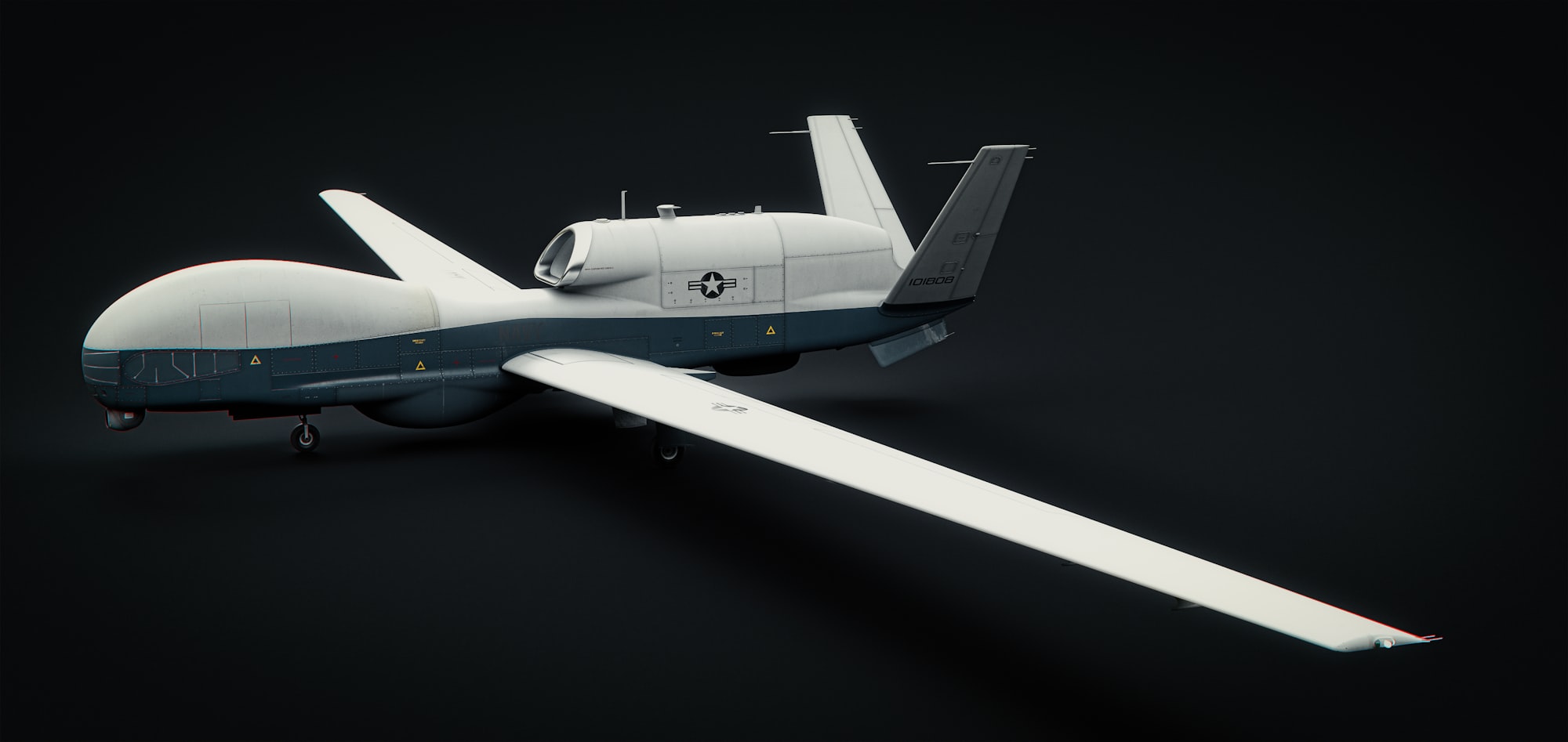

Related Großwald Resources
- MAGURA V5: First Sea-to-Air Kill – May 2, 2025
- Doctrine Brief: Sea Warfare 2.0 - How Autonomous Drones Are Shifting Naval Doctrine
- Großwald Focus Section on Naval & Maritime Defense
- Großwald Focus Section on Unmanned Systems
- Großwald Focus Section on C4ISR & EW
For Institutional Access
To integrate this report into private briefings or request pre-publication analysis, contact: editorial@desk.grosswald.org
Citation
All event and system details corroborated via OSINT, Ukrainian Ministry of Defence releases, and named Western outlets (WSJ, El País, AP).
Appendix: Confirmed MAGURA Strikes - Table Version
Confirmed MAGURA V5 Strikes (2023–2025)
| Date | Target | Location | Weapon | Source |
|---|---|---|---|---|
| 10 Nov 2023 | Serna & Akula-Class | Crimea | Kamikaze | The War Zone |
| 1 Feb 2024 | Ivanovets Corvette | Donuzlav | Explosive | ESD Magazine |
| 14 Feb 2024 | Caesar Kunikov | Alupka | Kamikaze | AP News |
| 5 Mar 2024 | Sergey Kotov | Kerch Strait | Explosive | Defence Express |
| 30 May 2024 | Tuna-Class boats | Crimea | Kamikaze | Kyiv Post |
| 10 Aug 2024 | KS-701 Tunets | Chornomorske | Kamikaze | NV Ukraine |
| 31 Dec 2024 | Mi-8 Helicopter | Cape Tarkhankut | R-73 missile | The Aviationist |
| 2 May 2025 | Su-30 Fighter Jet | Black Sea | R-73 missile | Source: The War Zone |
Confirmed MAGURA V7 Strikes (2025)
| Date | Target | Location | Weapon | Source |
|---|---|---|---|---|
| 6 May 2025 | Su-30 Fighter Jet | Novorossiysk | AIM-9 Sidewinder | Wall Street Journal |
Note: All confirmed as HUR-led MAGURA operations.


